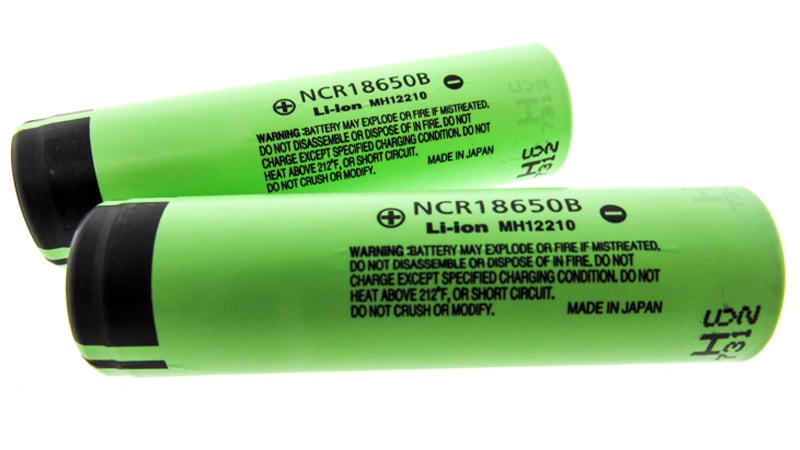When deciding on which battery packs to purchase for applications, one of the factors that customers look at is the manufacturing cost. On average, prices for lithium batteries ranged from about $132 per kWh in 2021 as electric vehicle battery packs in 2022 averaged $153 per kWh. While these prices are lower than back in 2008 ($1,355 kWh), lithium batteries have continually been the most expensive of battery chemistries.
There are numerous factors that contribute to the costs of lithium batteries including the cell, Battery management system (BMS), integrated circuits (ICs), pack system, and shipping.
Battery Cell Costs
The battery cell design contributes roughly 80% of manufacturing expenses. The cell consists of a cathode, anode, electrolyte, separators, and housing. Of all these components, the materials and manufacturing of the cathode make up the bulk of the expenses, followed by the anode and the separator. Cathodes are made from a range of metal materials, the main material being lithium with a combination of cobalt, nickel, or manganese. Graphite is the main material for anodes. The prices for these materials fluctuate based on availability and demand.

Example of lithium-Ion battery cells.
Customer demand for lithium batteries to power high-performance electronics and electric vehicles has caused shortages of these metal materials. Global sources are expected to dwindle by 2050. Lithium supplies have been impacted by heat waves in China while the mining of cobalt in the Democratic Republic of Congo (DRC) has created domestic and human rights issues. There are only a few countries where manufacturers gain the bulk of these materials as political unrest can cause supply chain issues.
Due to these factors, manufacturers end up pricing battery cells at a higher price point. Many manufacturers are looking for ways to lower these costs by using alternative materials while still providing enough power for the application. Electric vehicle manufacturers are testing silicon-based materials to replace graphite for anodes and switching to manganese or nickel for the cathode. Making changes to the materials can impact the quality of the battery, its capacity, and its longevity, which may not be suitable for all applications.
Battery Protection and Charge
The protection and charging of lithium cells are also key factors that play into the cost of manufacturing battery packs. Unlike other chemistries, national and international regulations require that all lithium-based chemistries come equipped with a battery management system (BMS). The BMS monitors the state of charge (SoC) and state of health (SoH) of the battery. If the battery becomes overcharged or overly discharged, these issues can lead to damage to the cell. The BMS is designed to prevent these problems to prevent damage and prolong the battery's life.
BMS prices will depend on how many functions the customer wants to include in the unit. Simple BMS devices will monitor SoC, SoH, and temperatures while others may also include cell balancing, real-time clocks, data loggers, and other features. The price of the BMS will increase when more features are included. Understanding the power needs of the application will allow customers to decide on how many features to include in the BMS.
When it comes to charging the battery, integrated circuits (ICs) are used as these circuits are located in battery chargers. The choice of integrated circuits can vary, such as linear chargers and switching chargers. In addition to charging the battery, ICs also provide over-voltage and overcurrent protection. They can prevent the battery from charging too quickly, charging past its stated capacity, and overheating while charging.
Battery charger costs will depend on whether a customer wants to include a charger with the battery pack when used for the application or allow the end user to select a charger on their own. It will also depend on whether the customer will select a customized charger or an off-the-shelf model. Customized chargers will raise the manufacturing costs for the battery pack.
Custom Battery Pack System
The battery pack system consists of the enclosure for the battery cells along with a wide variety of components. These components consist of the wire harness, relays, connectors, BMS software, and heating/cooling systems. The pack system ensures that the lithium cells deliver power to the connected device. Some components are standard, such as the wire harness, connectors, and BMS. Other components are optional as the customer may ask for these parts to be included in the pack system to provide benefits to the application.
When designing a custom battery pack system adding more components will raise manufacturing costs. However, also keep in mind that substituting cheaper material components, such as relays, may lower performance and battery life. A customer must take into consideration the costs of designing and manufacturing the pack system versus the performance and quality of the battery pack. In some cases, opting for higher pack system quality will lead to a longer-lasting battery pack, which will in turn provide better cost savings.
Testing, Certification, and Shipping
Lithium battery pack manufacturers must obtain safety certifications for the battery packs before the batteries can be shipped. Some testing is done in-house, such as CE marking certification, while other certifications must be obtained through testing laboratories. The costs for testing and certification will depend on the type of certification that will be obtained and can cost from $500 up to $20,000. Also, a certain number of battery packs may be required as they will undergo destructive and non-destructive testing.
If a problem arises during testing, this may require a redesign of the battery pack. This aspect increases manufacturing costs as the new design will also have to undergo testing and certification. Testing and re-certification will also happen if you switch manufacturers even when using the original design from the previous manufacturer. Customers should always factor in the testing, certification, and shipping requirements of lithium-based battery chemistries into their budgets.
Summary
Presently, the costs of designing and manufacturing lithium batteries are higher than other battery chemistries. As technologies advance, manufacturers will continue to experiment with changing this chemistry to lower costs while still providing high capacity to devices.
Customers looking to obtain custom battery packs and chargers should understand the power needs of the application and provide as much documentation as possible to the manufacturer during the design phase. The manufacturer can evaluate all documents and provide advice on possible alternative materials and redesigns that can lower manufacturing costs. In addition, bringing in the manufacturer during the initial design phases can help limit manufacturing issues and battery scrap that leads to costly waste.
Key Takeaways
- Battery cell materials drive high costs: Lithium-ion battery cells account for about 80% of manufacturing expenses, with cathode materials (lithium, cobalt, nickel, manganese) being the most costly and subject to supply chain fluctuations.
- Battery protection systems add to expenses: Every lithium battery requires a battery management system (BMS) to prevent overcharging, over-discharging, and overheating, with costs increasing based on added features such as cell balancing and real-time monitoring.
- Custom battery pack components impact pricing: The design of the pack system, including wire harnesses, relays, connectors, and cooling systems, influences overall costs, with higher-quality components leading to better performance and longer battery life.
- Safety testing and certification increase costs: Lithium battery packs must undergo rigorous testing and certification (e.g., UL, CE, UN regulations), with costs ranging from $500 to $20,000, and additional expenses if redesigns are required due to failed tests.
- Material innovations aim to reduce costs: Manufacturers are exploring alternative anode and cathode materials, such as silicon-based anodes and manganese cathodes, to lower lithium battery costs while maintaining high energy density and safety standards.
















